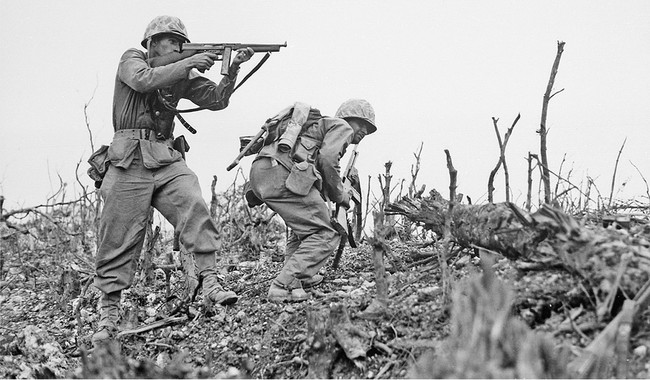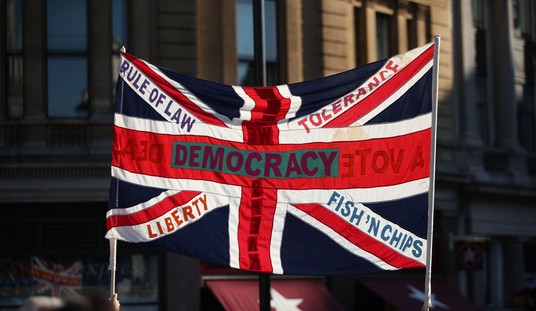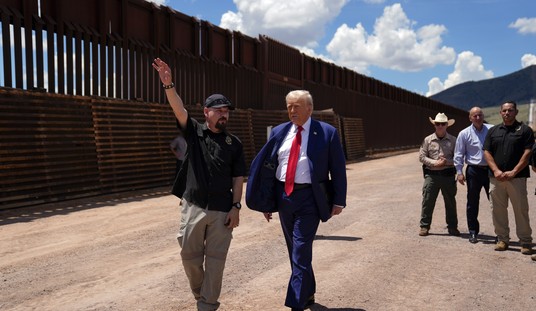The Tommy Gun
One of the greatest pieces of American firearms technology ever fielded has to be the famous Thompson submachine gun, the “Tommy gun” or “Chicago typewriter.” The first of its kind, the first weapon to be designated as a “submachine gun,” a selective-fire piece firing a pistol-caliber cartridge, the Thompson broke a lot of new ground. It was used by cops and robbers, soldiers, sailors, and Marines and came in a variety of layouts and calibers that a lot of people don’t expect. It’s one of the most recognizable weapons in the history of firearms, and the story of its development is as interesting as the history of its use.
Development
The story begins with one Brigadier General John T. Thompson, who had spent most of his Army career in the Ordnance Department. When Thompson stumbled across a patent issued to one John Bell Blish in 1915, a patent for an autoloading firearm mechanism that was less complex than a gas or recoil-operated action. Blish’s action used the adhesion of inclined metal surfaces under pressure to delay the opening of the action until the bullet had left the barrel. Thompson had been looking for a good design for a fully automatic rifle to replace the M1903 Springfield and Pattern 17 Enfield bolt guns then in service. He obtained the rights to the Blish patent, moved to Cleveland, Ohio, and founded the Auto-Ordnance Company in 1916.
Thompson and his team encountered one problem right away. The Blish action was a friction-delayed blowback action and was unsuited to the full-power .30-06 round then in use. The other military option was the .45 ACP, already in use in the M1911 pistol. Thompson, with this limitation in mind, envisioned a “hand-held machine gun,” reckoning that such a trench sweeper would be even more effective in the Great War trench warfare than even the notorious 1897 Winchester slam-fire 12-gauge death-stick that accompanied our boy Over There in 1917. In this, he was probably right, but no Thompson guns, initially called the “Annihilator I,” (one of the most awesome names ever given a weapon of war), made it into those trenches before Armistice Day.
I have to say, if I were a young man headed off to war, I’d be happier carrying a weapon called the “Annihilator.”
The result of the development process was the Thompson Model of 1921, which finalized the Tommy gun’s basic shape and form as we know it. The first production guns had a 20-round stick magazine for the .45 ACP rounds and cost a princely $200 in 1921 – or right around $35,000 in 2024 dollars. The gun was heavy – almost eleven pounds, empty – and had a short effective range of about 50-100 yards. But submachine guns are not long-range weapons but short-range high-volume bullet launchers, and in this, the Thompson excelled.
The Model 1921 was followed by several variations and updates, including the Model 1923, the Model 1921AC, the Model 1928, the 1928A1, the M1, and the M1A1. There was even a .30-06 variant, of which only one prototype was made. This model was intended to compete with the famous Browning Automatic Rifle, but let's be fair, competing with a Browning design hasn't generally been a good strategy.
The National Firearms Act
The Thompson, it must be noted, was available for civilian sale for the first few years of its production. That famous scene from the Netflix movie “The Highwaymen” where Kevin Costner walks into a gun shop, and his first words were, “I want to see that Thompson submachine gun” – I would so dearly love to visit that store!
The problem was Prohibition and the crime that arose because of it. There was a lot of money to be made in illicit booze, and in many of our major cities, the gangs were fighting over territory in which to sell illicit booze, and the Chicago Typewriter quickly became the favored weapon of good guy and bad guy alike. The result of this, and of notorious events like the St. Valentine’s Day Massacre, in which two Thompsons were used, was the 1934 National Firearms Act, the first major federal gun-control law. This law did not, despite what some may tell you, outlaw civilian ownership of fully-automatic weapons like the Thompson along with short-barreled rifles and shotguns but did tightly restrict their sales and required a $200 transfer tax whenever one was purchased.See Related: Sunday Gun Day XXXVI - Why Can't I Have One? Marble's Game Getter
This, as you might imagine, put a big crimp in the civilian sales of the Thompson. But an event that would begin in the next few years would see a lot of Thompson guns built and used all over the globe.
Deployment
Interestingly, the US Army wasn’t the first user of the Thompson – nor were they the first to use the Tommy gun in combat. Various police departments purchased them, as well as the crooks they opposed, but the first use of the Thompson in combat was against striking miners in West Virginia. In June of 1921, striking coal miners in the small town of Lick Creek opened fire on cars passing by. The situation escalated into the August-September 1921 “Battle of Blair Mountain,” and at one point, West Virginia state troopers opened fire on the miners with their new Thompsons.
Incidentally, the one Thompson gun I handled (but not fired) personally was one of two belonging to the Cedar Falls, Iowa Police Department. As part of a Journalism class assignment, I went on a ride-along one evening with an officer of the CFPD. Learning of my interest in guns, he snuck me into the armory - cops did things like this in those days - and let me, under supervision, handle not only the Thompson but the standard Smithy & Wesson .38 revolvers in use at the time as well as a Model 12 shotgun in riot trim. Imagine a cop doing something like that today!
Some of the early production Thompsons were purchased by the Irish Republic and ended up in the hands of the Irish Republican Army. The United States Postal Inspectors bought some, and finally, the Navy evaluated the Tommy gun. The result of the Navy testing was the Model 1928, with a slower rate of fire.
The most famous deployment of the Tommy gun was, of course, in World War 2. The Thompson was used in every theater of the war by all of the Allied forces. The initial issue to the U.S. Army and Marines was the M1928A1, which would take either stick or drum magazines and had a Cutts Compensator on the muzzle to help control recoil and muzzle climb. Later, the M1 and M1A1 appeared, with simplified actions incorporating more stamped parts.
 The Thompson quickly became a favorite of the soldiers and Marines who fought in that conflict. The Thompson was heavy and could be a handful to control, but it poured out a lot of fat, heavy slugs in a hurry, making it particularly useful in town fighting in Europe as well as in the jungles of the Pacific island-hopping campaigns and very effective at revoking the birth certificates of German and Japanese soldiers alike. Production of even the simplified M1 and M1A1 versions of the Thompson was complex, though. To address this, the M3 "Grease Gun" was brought out during the war to provide a cheaper, mass-production submachine gun, but the M3 was not well-received by the troops, who often complained of reliability problems.
The Thompson quickly became a favorite of the soldiers and Marines who fought in that conflict. The Thompson was heavy and could be a handful to control, but it poured out a lot of fat, heavy slugs in a hurry, making it particularly useful in town fighting in Europe as well as in the jungles of the Pacific island-hopping campaigns and very effective at revoking the birth certificates of German and Japanese soldiers alike. Production of even the simplified M1 and M1A1 versions of the Thompson was complex, though. To address this, the M3 "Grease Gun" was brought out during the war to provide a cheaper, mass-production submachine gun, but the M3 was not well-received by the troops, who often complained of reliability problems.
See Related: Sunday Gun Day Vol. II Ep. IV - Five Great Infantry Rifles
The Thompson remained in use after the war and was in use by US troops as late as Vietnam. And, what’s best, is you can buy a brand-new one, albeit semi-auto only and with a longer barrel than the originals.
Where does the Tommy gun stand today?
There is still a market for the Tommy gun, and there is still a company ready to meet the desires of people who want a (semi-auto, 16” barreled) version of the infamous Thompson. There is now, today, a company formed as Thompson Auto-Ordinance, where you can buy a semi-auto Thompson in the form of the 1927A1 and the M1.
The Thompson submachine gun was and is one of the most iconic, most recognizable weapons in the history of firearms. While we can’t get a new full-auto piece, we can at least get a modern, attenuated version that meets the modern legislative requirements. We can argue the logic and sensibility behind the 1934 NFA and subsequent gun laws all day – and I sometimes do – but it’s good that the iconic Chicago Typewriter is still available today.













